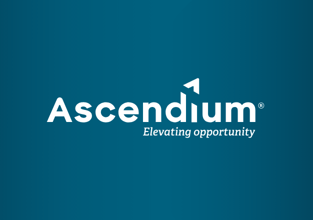Preventing Student Loan Default with Support and Outreach

Federal student loan borrowers across the U.S. face a complex repayment system. With student loan debt nearing $1.7 trillion and default rates on the rise, it’s never been more vital for colleges and universities to prioritize default prevention (Source: Federal Student Aid). One of the most effective and underutilized tools in this effort is borrower outreach — timely, targeted communication that guides borrowers to action before problems escalate. Preventing student loan default is crucial for all parties involved, including borrowers, schools, loan servicers, and taxpayers. Effective support and outreach strategies can greatly reduce the risk of default by keeping borrowers informed, engaged, and supported throughout the repayment process.
A Structured Approach
Federal student loan default occurs when a borrower fails to make payments for an extended period, typically 270 days. Default triggers severe consequences, including wage garnishment, loss of federal benefits, tax refund seizure, and damage to the borrower’s credit score. These financial setbacks can be devastating.
Defaulted borrowers negatively impact a school’s cohort default rate (CDR), a metric used by the U.S. Department of Education (ED) to measure accountability and determine continued eligibility for federal student aid programs. So how does outreach play a pivotal role in preventing default? And what does borrower outreach look like?
Outreach is the cornerstone of effective student loan management and default prevention. Many borrowers fall behind not because they’re unwilling to repay their loans, but because they’re unaware of their options, confused by the process, or overwhelmed by life circumstances. Strategic outreach bridges this gap by offering information, support, and encouragement when it’s needed.
Early and Consistent Communication Throughout Repayment Life Cycle
Addressing default prevention in a holistic way can help your former students stay out of default. When borrowers are supported at all stages of repayment, success goes up.

- Grace Outreach and Counseling: It’s important to reach out to borrowers during the grace period, ensuring they are aware of their upcoming responsibilities. With targeted emails and optional phone and text outreach, you can ensure borrowers know their repayment options and the steps they need to take to avoid falling behind.
- Early Identification of At-Risk Borrowers: Use data tracking to identify enrollment status, academic performance, and financial data to flag risk factors. Use behavior monitoring to flag missed payments, returned mail, or email bounces. All can be early signs of trouble. Enact automated alerts to trigger outreach campaigns when red flags are raised.
- Default Prevention Outreach and Counseling: Making early contact with borrowers at risk of delinquency through multiple communication channels, including phone, email, and text messaging, is a great goal. That way you can identify struggling borrowers early, educate them about repayment plan and forgiveness options, and discuss a possible deferment or forbearance.
- Default Rehabilitation Outreach and Counseling: Borrowers who have defaulted need extra care and assistance. You want to find an organization who can help guide borrowers through rehabilitation with the goal of helping them to restore their financial standing and regain control over their loan repayments.
Using effective skip tracing services will help maintain communication even if a borrower’s contact information changes. Additionally, using diverse methods of outreach can be critical in reaching borrowers. Letters, personalized emails, live chats, and text messages help to keep borrowers informed and engaged.
We suggest keeping these additional best practices in mind, for optimal effectiveness.
| Primary Activities | GraceBegins ≈ 60 days before it ends | Deferment and Forbearance Begins ≈ 60 days before it ends | DelinquentBegins ≈ 75 past due |
|---|---|---|---|
| Plain language communications | |||
| Post-call resolution resources | |||
| Inbound calls | |||
| Chat | |||
| Respectful counseling with one-to-one conversations that educate borrowers | |||
| No talk-time limitations for counselors | |||
| Warm servicer transfers include counselors who advocate for borrowers | |||
| Outbound calls | |||
| Outreach layers timed and applied based on a borrower’s behavior | |||
| Telephone skip tracing | |||
| Specialized military outreach | |||
| Late-stage delinquency team |
| GraceBegins ≈ 60 days before it ends | Deferment and Forbearance Begins ≈ 60 days before it ends | DelinquentBegins ≈ 75 past due |
|---|---|---|
| Primary Activities | ||
| Plain language communications | ||
| Post-call-resolution resources | ||
| Inbound calls | ||
| Chat | ||
| Respectful counseling with one-to-one conversations that educate borrowers | ||
| No talk-time limitations for counselors | ||
| Warm servicer transfers include counselors who advocate for borrowers | ||
| Outbound calls | ||
| Outreach layers timed and applied based on a borrower’s behavior | ||
| Telephone skip tracing | ||
| Specialized military outreach | ||
| Late-stage delinquency team | ||
Personalized Support Services and Resources
Colleges and universities are uniquely positioned to provide personalized support and valuable resources and can make a significant difference in the lives of their former students. Here’s how an inbound helpline and educational resources can help.
- Personalized counseling helps borrowers navigate the complex world of student loan repayment.
- Self-help resources, including videos and guides, help former students find the right repayment plan and help them to achieve their financial goals and succeed in repayment.
- Advanced tools help borrowers determine eligibility for and enroll in available repayment and forgiveness programs with a focus on savings. Tools can include loan simulators, budgeting apps, and online FAQs.
- Financial literacy programs help teach budgeting, credit management, and loan repayment.
- Webinars and workshops, during school and after graduation, offer one more medium to share information on how to be successful in student loan repayment.
Loan Servicer Collaboration
The role of the student loan servicer is a cornerstone in preventing default. However, systemic challenges (e.g., confusing programs, constant changes, etc.) and borrower-level challenges that go beyond their control (e.g., borrower disengagement, complex repayment systems, etc.) create an incredibly challenging environment for servicers to overcome. Student loan repayment support, working in conjunction with servicers, can make a positive difference. For example:
- Collaborating to ensure records are accurate avoids misinformation and lost documentation.
- Creating unified messages prevents mixed messages from different departments or contractors.
- Training staff to be educators, not just collectors, builds trust with borrowers.
Community and Peer Support
Ensuring that student loan borrowing and repayment are topics that are top of mind throughout your community and peer support programs are also important.
- Encourage graduates to mentor current students through alumni networks.
- Create student peer ambassadors to help other students navigate loan systems.
- Embrace social media groups that create a supportive and moderated space for questions and resources.
Best Practices Summary
|
|
|
|---|---|
| Early Contact and Multiple Channels | Builds trust and keeps borrowers informed. |
| Personalized Support | Encourages borrower engagement. |
| Risk Monitoring | Helps intervene before default. |
| Flexible Repayment Plans | Makes repayment manageable. |
| Education and Peer Support | Increases financial confidence. |
Overcoming Limited Staff and Budgets
If you’re a school that wants to invest in proactive outreach and personalized support to reduce defaults, combatting limited staff and budgets are a reality. It’s a key reason why many colleges and universities seek a trusted partner to provide default prevention services. Outreach must be timely, data-informed, and compassionate. When former students feel seen, supported, and guided, they’re far more likely to stay on track. Partnering with the right organization to represent you is crucial. Ideally, a default prevention partner will have vast industry knowledge and experience, expert loan counselors, and a proactive, personalized engagement plan at each stage of a former student’s journey, to ensure they stay on track.
How To Find a Default Prevention Specialist
There are a variety of things to consider when comparing default prevention providers.
Define clear needs, goals, and objectives.
- Determine what you aim to achieve with a default prevention program. Are you looking to reduce your CDR, improve student financial literacy, enhance outreach to at-risk borrowers, or a combination of these factors?
- Identify requirements and "nice-to-haves" by making a list of essential services and features, as well as those that would be beneficial but not strictly necessary. This could include things like borrower data analysis, communication tools, counseling services, and compliance expertise.
Explore your options.
- Use a Request for Proposal (RFP) to facilitate your search.
- Ask peers for recommendations on who they use for their default prevention services. Who do they trust? What has been their experience with this partner? Which industry expert are they considering using as they start their research to find the best partner?
- Look for providers specializing in student loan repayment support with a proven track record of success.
- Seek providers who can customize solutions to your institution's specific needs and goals.
- Evaluate the technology and tools offered by providers, such as borrower data analysis software and communication platforms.
- Verify that the provider has a strong understanding of student loan regulations and compliance requirements.
- Assess the provider's customer service and support capabilities, including their responsiveness and willingness to assist with questions or difficulties.
To help you get started, download 6 Steps to Choosing a Default Prevention Provider. Additionally, we’ve come up with a list that uses these key considerations, and more, to get the best provider to meet your needs. For the complete comparison list, download Checklist to Compare Default Prevention Providers.
By using these free resources, your college or university can effectively identify, evaluate, and select a student loan default prevention service provider that aligns with your institutional goals and ultimately helps your students achieve successful loan repayment.
Ascendium Is a Trusted Partner With a Proven Track Record of Success
At Ascendium, our mission is to provide comprehensive, borrower-centered solutions that foster academic achievement, financial wellness, and student loan repayment success. Backed by over five decades of experience, we work tirelessly to help borrowers avoid default and achieve financial security at every stage of repayment.

Our results speak volumes about the effectiveness of our borrower-centered approach. Over a five-year period, we helped prevent 5.3 million loans from defaulting, positively impacting the lives of millions of borrowers. Contact us if you’re seeking help in preventing default. We’re here to help.